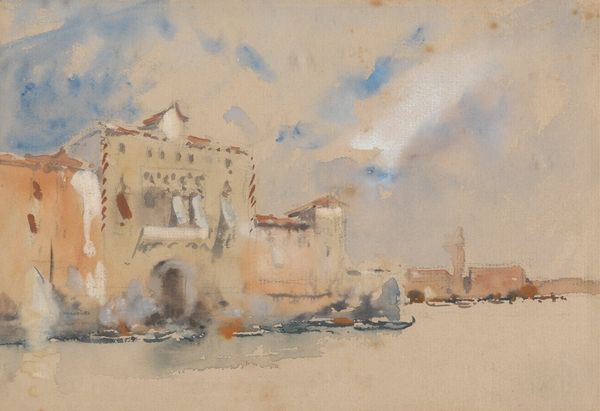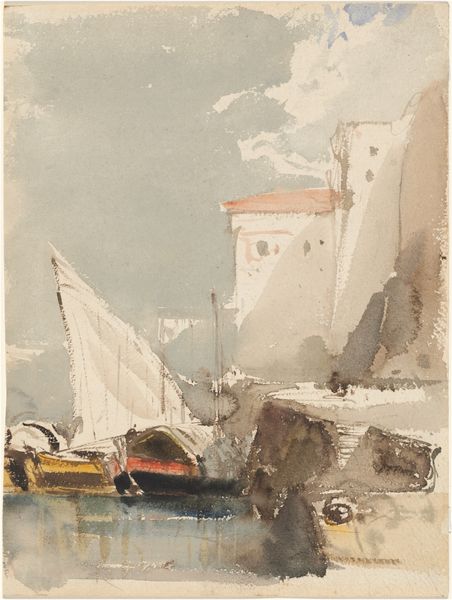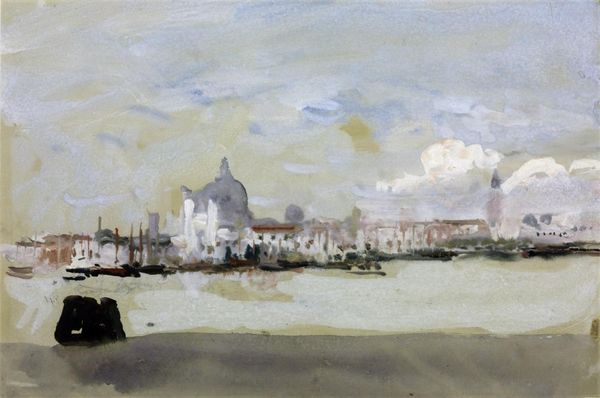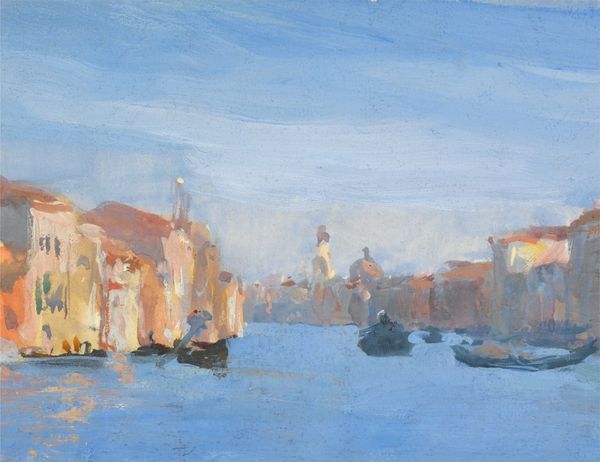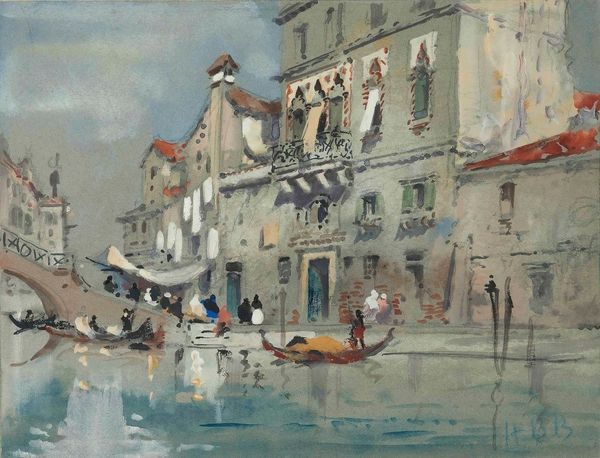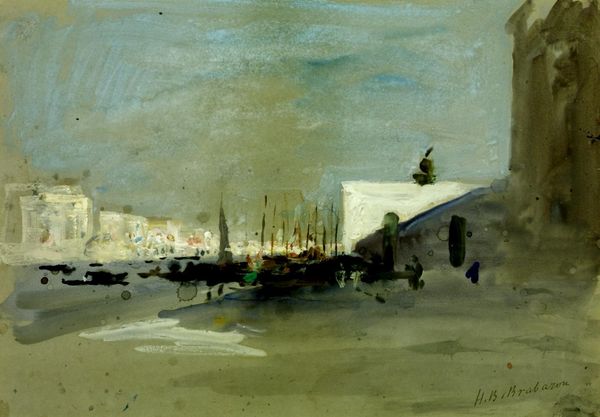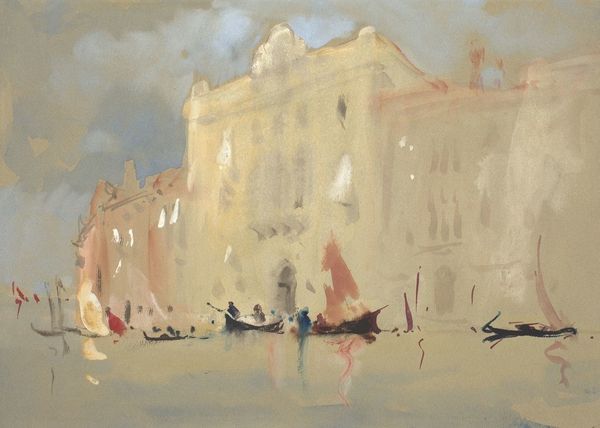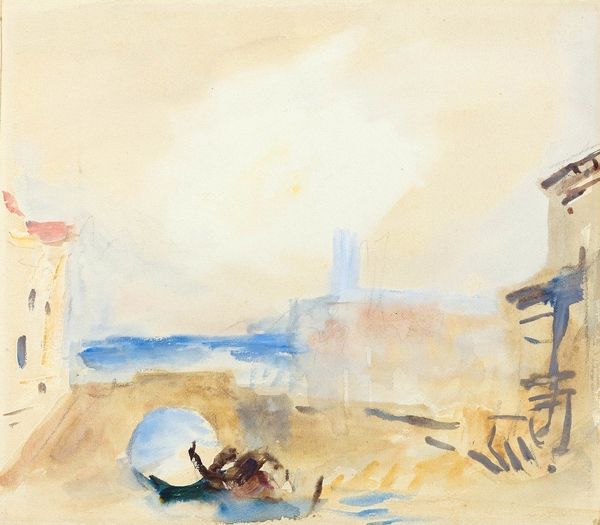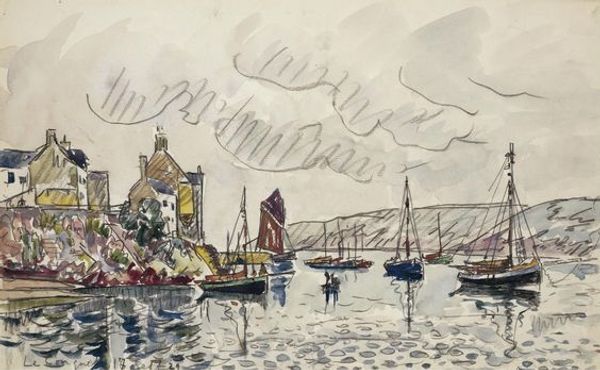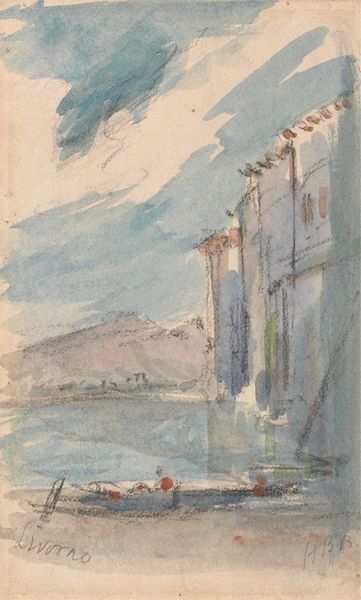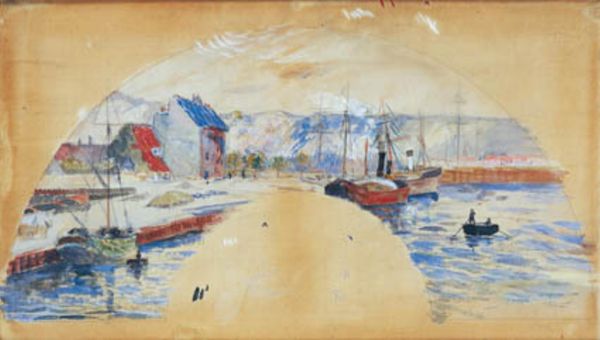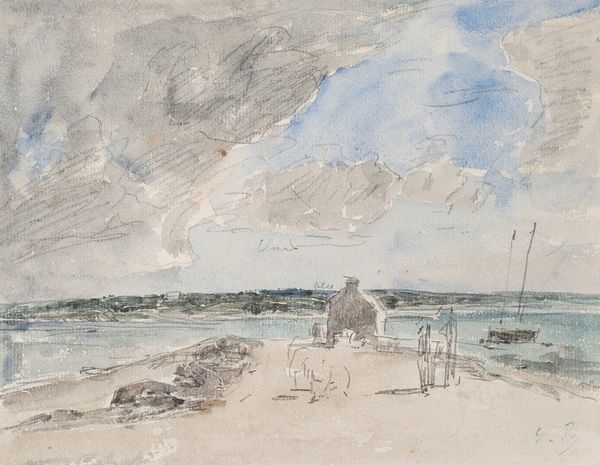
painting, watercolor
#
venetian-painting
#
painting
#
landscape
#
oil painting
#
watercolor
#
romanticism
#
cityscape
#
watercolor
Copyright: Public Domain: Artvee
Curator: What strikes me first is the lightness of the scene, the luminosity. The subtle washes of watercolor evoke a tranquil yet active atmosphere, the boats bobbing on the water juxtaposed with the imposing architecture of Venice in the background. Editor: And that leads us nicely to this work titled “Fish baskets, Chioggia, south of Venice," by Hercules Brabazon Brabazon. While the date is unknown, his work generally fits within late 19th-century British Impressionism. I see here a fascination with capturing a moment, the everyday labor of the Venetian people intertwined with the physical landscape. Curator: Exactly! You see the evidence of the hand so clearly, and a celebration of that materiality. The watercolor medium lends itself perfectly to capturing the play of light on the water, and how it interacts with the buildings. Consider also, the tools used by the artist; what kind of brushes allowed for such sweeping strokes? And what source of paper has he selected for optimal translucency and colour reflection? These choices point to an artist acutely aware of the physicality of painting. Editor: And those are critical material observations. Brabazon also places the local laborers and their trade quite deliberately in view of this classical architecture. The placement really underlines that contrast – the commerce, the daily grind versus these towering, almost intimidating structures that carry so much symbolic weight, but that the locals move past almost anonymously to carry out the economy in this landscape. What narrative does this capture around labor versus luxury and history? Who has access to the "beauty" versus what sustains the access of that very same privilege? Curator: Well, I’m also fascinated by the economy of the application itself. It’s so direct and seemingly spontaneous, and so much achieved with so little pigment. Brabazon’s working practice reminds us of watercolor’s portability – fitting into bags, light for the traveller – which surely fed its associations with amateur art making in this period. And so his painterly deftness might push us to challenge established categories and question these loaded differentiations between the artistic labour of "high" art and casual hobbies for leisure. Editor: You're spot on with that connection to "amateur" practices and labour values of gendered materials, especially within domestic labour in contrast to "serious" (often white, male) professional arts. It brings to question the ways women have often been systemically denied recognition and status within dominant art world paradigms and also questions who holds access to and defines professional labor, high art and beauty? What hierarchies remain unacknowledged when considering a work that ostensibly documents fishing and daily industry versus the architectural elite? Curator: Indeed! It reminds us that any close looking inevitably draws in layers of history, labor and societal expectation—visible as pigment and brushwork, yes, but deeply rooted within broader contexts too. Editor: I leave this work with new layers to continue contemplating. Thanks for sharing a nuanced perspective!
Comments
No comments
Be the first to comment and join the conversation on the ultimate creative platform.

